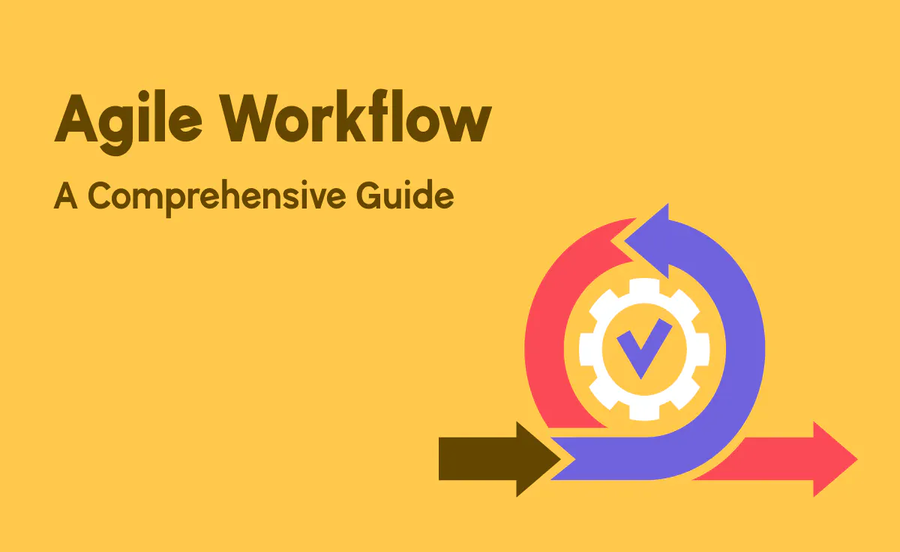
In the ever-evolving realm of business, adaptability and responsiveness reign supreme. To maintain a competitive edge, it’s imperative to embrace methodologies that facilitate nimble maneuvering through complex projects. Enter Agile workflow methodology, a potent approach to project management that empowers teams to navigate challenges with flexibility and efficiency. Whether you’re a seasoned project manager or new to the game, mastering Agile principles can significantly boost your team’s productivity and success. Join us on a journey through the fundamentals of Agile workflow and discover practical tips for its seamless implementation in your organization, with a special focus on leveraging Stintar (https://stintar.com) for optimal results.
Understanding Agile Workflow
Originating from the software development sphere, Agile methodology has transcended industries, finding applications in marketing, design, and product management. At its core, Agile revolves around the iterative approach, championing collaboration, adaptability, and continuous improvement. Unlike traditional linear methods, where projects progress through predefined stages, Agile breaks down work into smaller, manageable increments known as “sprints.”
Key Principles of Agile
- Iterative Development: Agile advocates for iterative cycles, each sprint geared towards delivering tangible results. This iterative approach facilitates early feedback collection, enabling teams to course-correct swiftly, thus mitigating the risk of costly errors down the line.
- Customer Collaboration: Central to Agile is customer feedback. Involving customers or stakeholders throughout the development process ensures that the end product aligns with their needs and expectations.
- Adaptive Planning: Agile embraces change and uncertainty, acknowledging that requirements and priorities may evolve. Rather than rigidly adhering to a predefined plan, Agile teams prioritize flexibility, adjusting their strategies as new information surfaces.
- Cross-Functional Teams: Agile fosters collaboration across diverse disciplines, uniting individuals with varied skills and perspectives. Empowered to make autonomous decisions, cross-functional teams nurture creativity and innovation.
Implementing Agile Workflow
- Define Your Goals: Establish clear project objectives and scope, involving key stakeholders to align on shared goals.
- Select an Agile Framework: Choose from frameworks like Scrum, Kanban, or Lean, tailored to your team’s needs and project requirements.
- Build a Cross-Functional Team: Assemble a diverse team equipped with requisite skills, fostering a collaborative environment conducive to idea-sharing.
- Plan Your Sprints: Break down the project into manageable tasks, prioritizing them based on importance and complexity. Set clear goals and timelines for each sprint.
- Embrace Continuous Improvement: Cultivate a culture of continuous enhancement, actively seeking and utilizing feedback to drive progress. Regular retrospectives aid in identifying areas for optimization.
- Iterate and Adapt: Remain flexible and adaptive, ready to revise plans based on evolving circumstances or newfound insights.
What Sets Agile Workflow Apart?
Distinguishing Agile from traditional methodologies lies in its embrace of adaptability and iterative progress. Here’s how Agile stands out:
- Flexibility: Unlike rigid approaches, Agile accommodates change, allowing teams to pivot swiftly in response to feedback or shifting priorities.
- Collaboration: Agile fosters close collaboration, nurturing synergy and creativity among cross-functional teams.
- Iterative Development: Instead of lengthy development cycles, Agile delivers incremental improvements, facilitating continuous enhancement.
- Customer-Centricity: Agile prioritizes customer satisfaction by incorporating feedback throughout the development process, ensuring alignment with customer expectations.
The Agile Methodology’s Four Key Elements
- Individuals and Interactions Over Processes and Tools
- Working Software Over Comprehensive Documentation
- Customer Collaboration Over Contract Negotiation
- Responding to Change Over Following a Plan
Agile Software Development Cycle
- Initiate: Define project scope, objectives, and stakeholders, establishing an initial backlog of features.
- Plan: Prioritize features, define sprint goals, estimate effort, and create an execution plan.
- Execute: Collaboratively develop, test, and integrate features defined in the sprint backlog, with daily stand-ups for alignment.
- Review: Conduct sprint reviews to gather feedback, informing future iterations.
- Evaluate: Reflect on sprint performance, identifying areas for improvement through retrospectives.
In today’s dynamic business landscape, adopting Agile workflow methodology is paramount for organizations striving to remain competitive and deliver value to customers. By embracing flexibility, collaboration, and continuous improvement, teams can streamline processes, foster innovation, and achieve greater success in their endeavors. Whether embarking on new initiatives or optimizing existing workflows, this definitive guide to Agile workflow, coupled with the power of Stintar, paves the way for unparalleled success.

